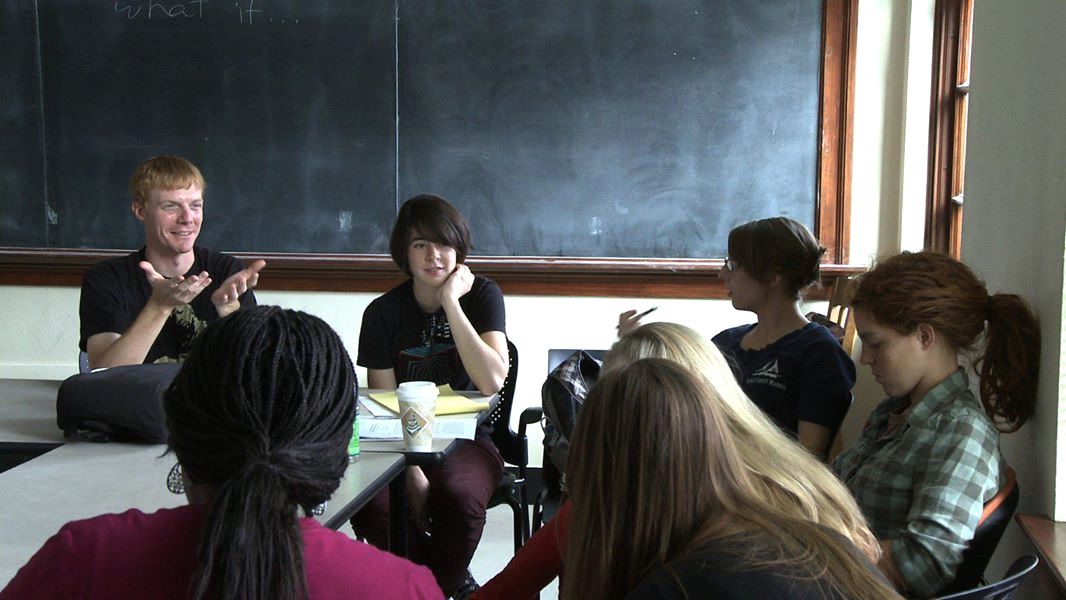I spent my undergraduate years working at record stores. Not surprisingly, the lulls behind the counter were largely spent talking about and sharing music. We’d all bring in our small CD cases, each stocked with a dozen or so discs for the shift. There was a lot of judging and clowning, but even more sharing and putting each other on to new sounds.
When I first got an iPod in 2003, I thought the practice would continue. Around the time that I procured my refurbished player, my friend Chang came out to San Diego on tour with dälek. Before a show one day, he was hanging out with some of his old college friends, one of whom had a new boyfriend. Chang snagged the dude’s iPod from her, and was judging her new beau on the merits of his mp3s. Maybe this happens more often than I’m aware, but this case is the rarity in my experience. Ironically, our listening experiences tend to be as insular as the devices that facilitate them.

When the Walkman first came out, it was intended for sharing. The first models released had two headphone jacks. I distinctly remember the first one I listened to having dual jacks. When the initial numbers came back, and they found that no one was sharing the devices, Sony retooled their tack. In the ads, Weheliye (2005) writes that “couples riding tandem bicycles and sharing one Walkman were replaced by images of isolated figures ensnared in their private world of sound” (p. 135). And so it has gone, each of us to his or her own.
There is research on the matter though. Termed “playlistism,” the studies aim to highlight the links between music and identity using the practice of sharing playlists. Assuming that we compile playlists to represent our identities, the sharing of them should show how we present ourselves through music. Citing Brown, Sellen, & Geelhoed (2001), Valcheva (2009) found that sharing via peer-to-peer networks “confounded the traditional way of possessing and sharing music, and thus instigating a shift, on one hand, towards a citizen/leech styled community where music sharing interaction tends to be anonymized.” We don’t use P2P spaces to share in a traditional sense. In contrast, “[P]laylistism is underpinned by the practice of capturing and contributing one’s ‘music personality’ in the form of playlists that are either published online or shared through portable devices.” As one article put it, “We are what we like.”
 Now that we listen more from the cloud and less as a crowd, the streaming services have adopted a stance of “social integration.” Similar to what Four Square does with your location when you check in to a place (automatically sending it to your social networks), Spotify does with the song you’re listening to. While Spotify doesn’t require that you share your listening, it does require you to have a Facebook account. Some online publications have adopted the practice as well, letting all of your friends know what you’ve been reading online. The trend is troubling. Social integration is the opposite of sharing. Sharing implies intention, and if your playlists are being broadcast without your curation, well, then they’re just spam in the streams of those who follow or friend you. It’s analogous to signing your friends up to newsletters they might not want or adding their numbers to telemarketers call-lists. There is nothing social about it.
Now that we listen more from the cloud and less as a crowd, the streaming services have adopted a stance of “social integration.” Similar to what Four Square does with your location when you check in to a place (automatically sending it to your social networks), Spotify does with the song you’re listening to. While Spotify doesn’t require that you share your listening, it does require you to have a Facebook account. Some online publications have adopted the practice as well, letting all of your friends know what you’ve been reading online. The trend is troubling. Social integration is the opposite of sharing. Sharing implies intention, and if your playlists are being broadcast without your curation, well, then they’re just spam in the streams of those who follow or friend you. It’s analogous to signing your friends up to newsletters they might not want or adding their numbers to telemarketers call-lists. There is nothing social about it.
I believe sharing music is a powerful practice. I wouldn’t know about most of the bands I listen to or have ever listened to if it weren’t for the friends who shared them with me. Sharing via automation does not make things social. Real sharing requires attention and intention. No algorithm can replicate that.
References:
Brown, B., Sellen, A. & Geelhoed, E. (2001). Music sharing as a computer supported collaborative application. Proceedings of ECSCW 2001, Bonn, Germany: Kluwer academics publisher.
Gelitz, Christiane (2011, March/April) You Are What You Like. Scientific American Mind.
Valcheva, Mariya (2009). Playlistism: a means of identity expression and self‐representation. A report on a conducted scientific research within “The Mediatized Stories” project at the University of Oslo.
Weheliye, Alexander G. (2005). Phonographies: Grooves in Sonic Afro-Modernity. Durham, NC: Duke University Press.

